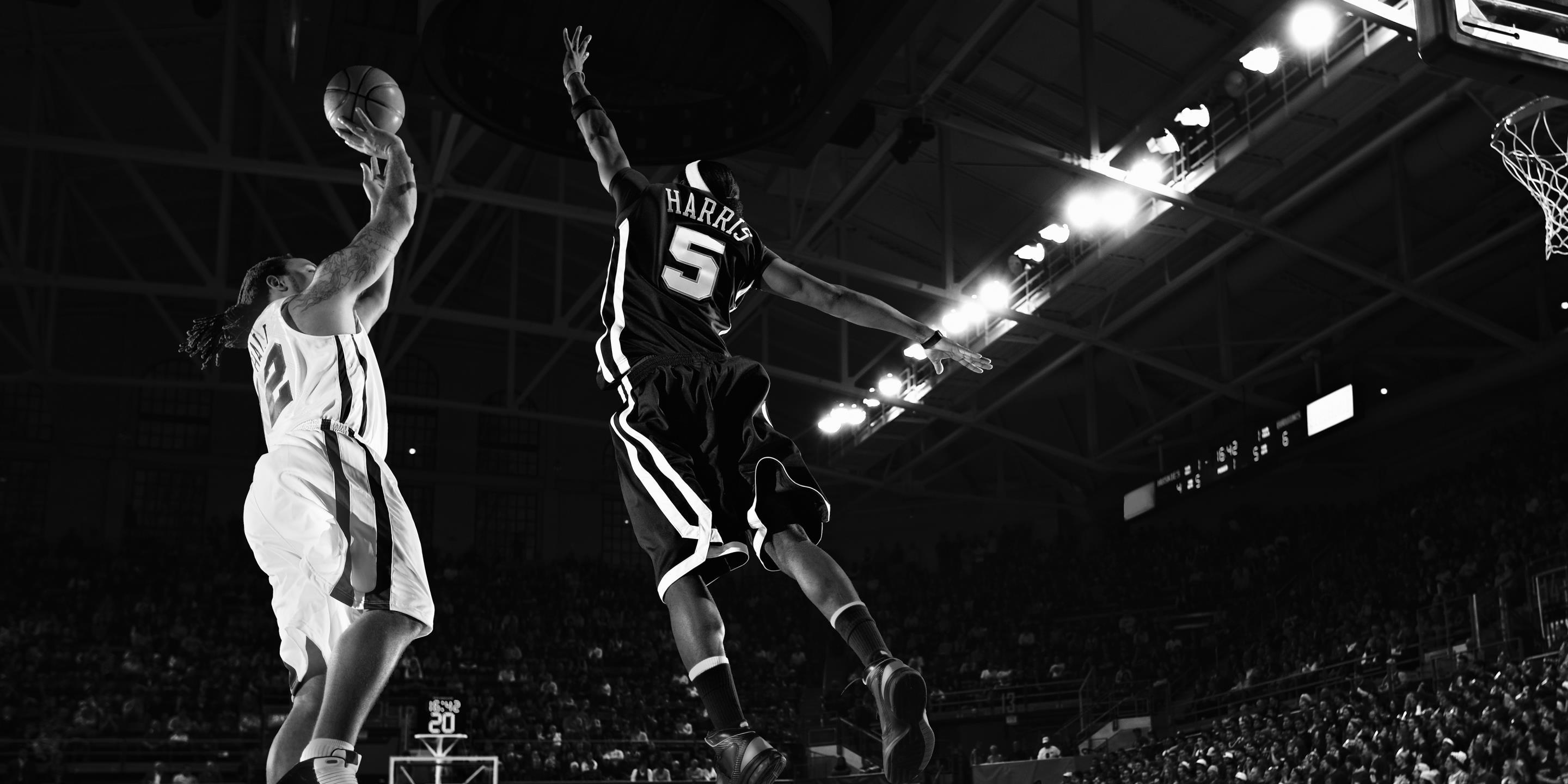It’s not just talent: Technology is priming players for even better performance.
At the University of Maryland, athletic interns walk around with iPads; every player on the University of Michigan’s men’s basketball team has their own iPod touch; in Iowa, wearables track athletes’ micro-movements and total work output. The secret to March Madness dominance? Technology.
“We want to be ahead of the curve in terms of technology and training methods,” says Jon Sanderson, C.S.C.S., the head strength and conditioning coach at the University of Michigan. “We don't want to be stuck a decade ago in terms of technology, so we’re always looking for the next good thing.”
Below, top strength and conditioning coaches share the tools they use to stay at the top of their games.
Digitized Training Plans And Leaderboards
Instead of tracking down papers full of training plans, Sanderson tracks velocity and quality of work with Push Strength, a wearable that provides realtime performance data. During main team lifts, Push Strength gathers data on exercises like power cleans and snatches. “We can quantify the quality of work we are doing,” Sanderson says. There’s also a platform that allows him to write programs and push them to a specific device. “Everything we do is on devices,” he says.
Another cool feature: a leaderboard that tracks power output and velocity provides built-in motivation. “When an athlete sees their name in last place, they are going to work hard to get out of there,” he says.
Smart Surfaces
To identify the red flags of movement dysfunction, Sanderson doesn’t just rely on his own eyesight. Force Plates by AMTI—elevated platforms athletes jump onto—provide data on how much force someone applies when they jump and how they apply that force. Through the plates, Sanderson tracks asymmetries as well as biomechanics (like how someone landed). “It provides a profile of what kind of an athlete you are,” he says.
Multi-Planar Movement Analysis
Australian-based Catapult is favored by elite teams all over the globe. Using an accelerometer, a gyroscope, and a magnetometer, the device measures external output, relaying how many high-force efforts players do in each direction. “It’s given me a greater understanding of the movements in basketball,” says Bill Maxwell, M.S.C.C., the head strength and conditioning coach at the University of Iowa. “Most of the game is lateral and backwards—it’s not as much forward as one would think.” With information like this, Maxwell can implement specific movements into warm-ups and practices.
Sanderson—who also uses Catapult—says you can gather “total player loads” or how hard a specific athlete works. “Our guards, who do more and are quicker, may accumulate more practice loads than someone who doesn't move as much,” he explains. Coaches then prescribe less or more intense sessions accordingly.
Souped-Up Compression Gear
“A lot of technology comes down to consistency of application,” says Kyle Tarp, C.S.C.S., the director of basketball performance at the University of Maryland. “The more information you get from it, the more powerful it is: You start to see trends, and it becomes predictive.” That’s why, for the last four years, Tarp has been using Zephyr, a monitor with a built-in accelerometer that measures everything from core temperature and heart rate to mechanical loads. The science is so seamless it can be built into compression gear.
LED Lights
At the University of Michigan, training for agility with cones is out. FitLight trains “reactive agility,” says Sanderson. Since the LED-powered lights are controlled by a tablet, there’s no way of telling which one will light up next. “Basketball is so reactive. The offense is not going to tell you, ‘Hey, I am going here.’ You need to train athletes to react,” he says.
HRV and Brainwave Trackers
Most technology provides insight into player performance on the court—it doesn't always reveal how athletes respond to the work they’re doing, says Tarp. “We have athletes who are 7’ 0”, 250 and others who are 6’ 2”, 185. They have different recovery abilities. We wanted to know how they’re responding.”
That’s where Omegawave comes in. A few times a week, players are hooked up for a five-minute test that tracks heart rate variability and brain wave function. The test spits out a “readiness score” based on different physiological systems. A bad score can lead coaches to start asking questions: Is a player stressed? Is he lacking sleep? Both Maryland and Iowa utilize the device.
